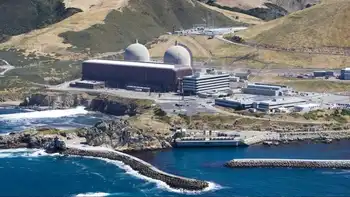Two schools to get solar panels
By September, 50 solar panels will cover the roofs of Hillcrest Community School and William Lyon Mackenzie Collegiate – the first step toward an ambitious plan to implement a renewable energy grid across the city's 558 public schools.
"We have schools in virtually every neighbourhood in the entire city. You have this vacant space on all the rooftops. These would be the perfect locations to really create a green grid across the city," said Toronto trustee Josh Matlow, who announced the project's launch at a news conference.
In 2006, the Toronto District School Board approved the creation of a renewable energy project at Hillcrest, near Bathurst and St. Clair. The board will hear a proposal for permission to expand the project to at least 10 other pilot schools across the city.
The energy produced at Hillcrest – roughly 12,000 kWh – will be used to supply 80 per cent of the heat for the school's pool and hot water.
"If we did what we are doing at Hillcrest at every one of the schools that has a pool right now, we'd actually cover the incremental cost we are missing to pay for the operating cost of the pools," said Matlow. "So in other words, we could save school pools if we did this."
Over time, the schools will be able to generate excess electricity and sell it back to the grid as a way to bring in revenue, he said.
The board hired a consultant to conduct studies to examine different technologies – solar thermal, geothermal and solar photovoltaic (PV) – and explored ways to pay for them. The proposal, entitled "Renewable energy: Lessons learned, the great new energy act and eleven new projects," asks the school board for an investment of $1.2-million for the installation of solar PV at 10 schools, plus Hillcrest.
The schools are expected to generate 131,000 kWh per year in total – around the same as taking a small elementary school off the grid.
The province recently announced a generous pricing structure for energy generated from renewable sources, increasing payments from a flat rate of $0.42/kWh to as high as $0.802/kWh, said Matlow, making it a good time for schools to get into the clean energy business.
In the case of Hillcrest, the money invested will be paid off even sooner, said Matlow. The solar panel retrofit at Hillcrest will cost $270,000. Natural Resources Canada will fund the first $100,000 through an incentive grant, and the rest will come from the school board.
"It is an expensive capital project," said Matlow. But the money will be made up in 11 to 12 years, he added.
"We are going to have savings of $11,500 a year that we would normally pay for the natural gas cost that we won't have to because of the panels."
Related News

Mines found at Ukraine's Zaporizhzhia nuclear plant, UN watchdog says
KYIV - The United Nations atomic watchdog said it saw anti-personnel mines at the site of Ukraine's Zaporizhzhia nuclear power plant which is occupied by Russian forces.
Europe's largest nuclear facility fell to Russian forces shortly after the invasion of Ukraine in February last year. Kyiv and Moscow have since accused each other of planning an incident at the site.
On July 23 International Atomic Energy Agency (IAEA) experts "saw some mines located in a buffer zone between the site's internal and external perimeter barriers," agency chief Rafael Grossi said in a statement on Monday.
The statement did not say how many mines…




